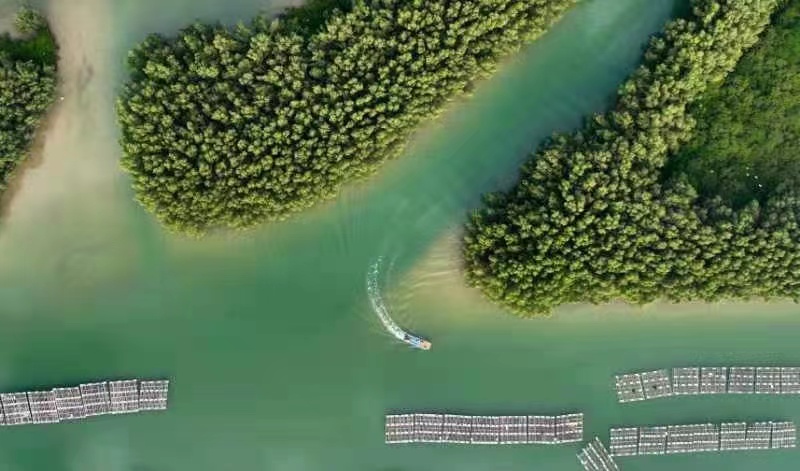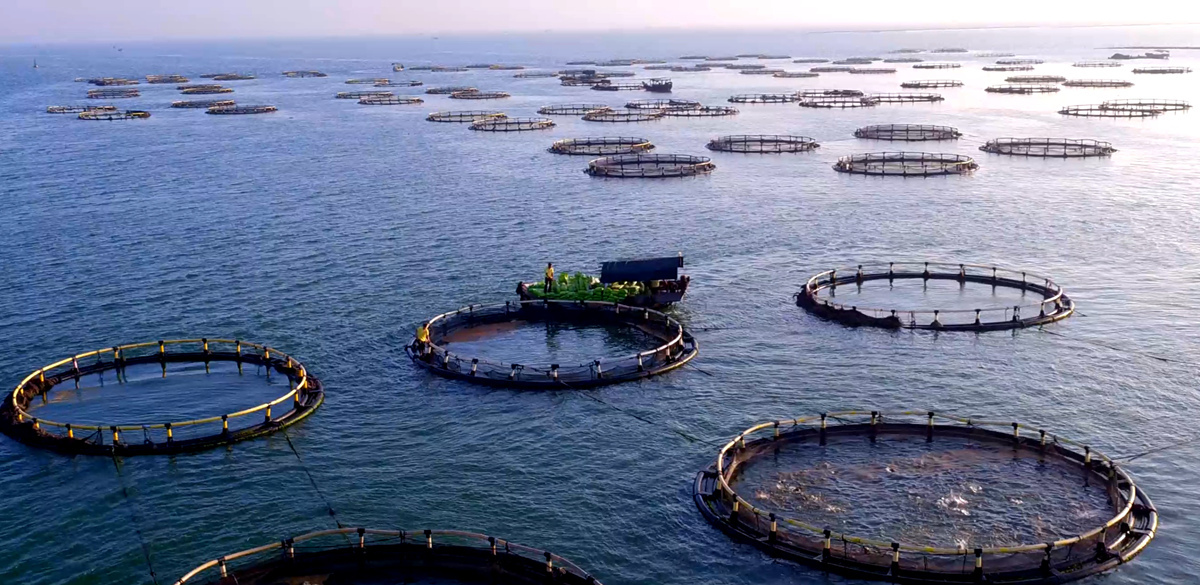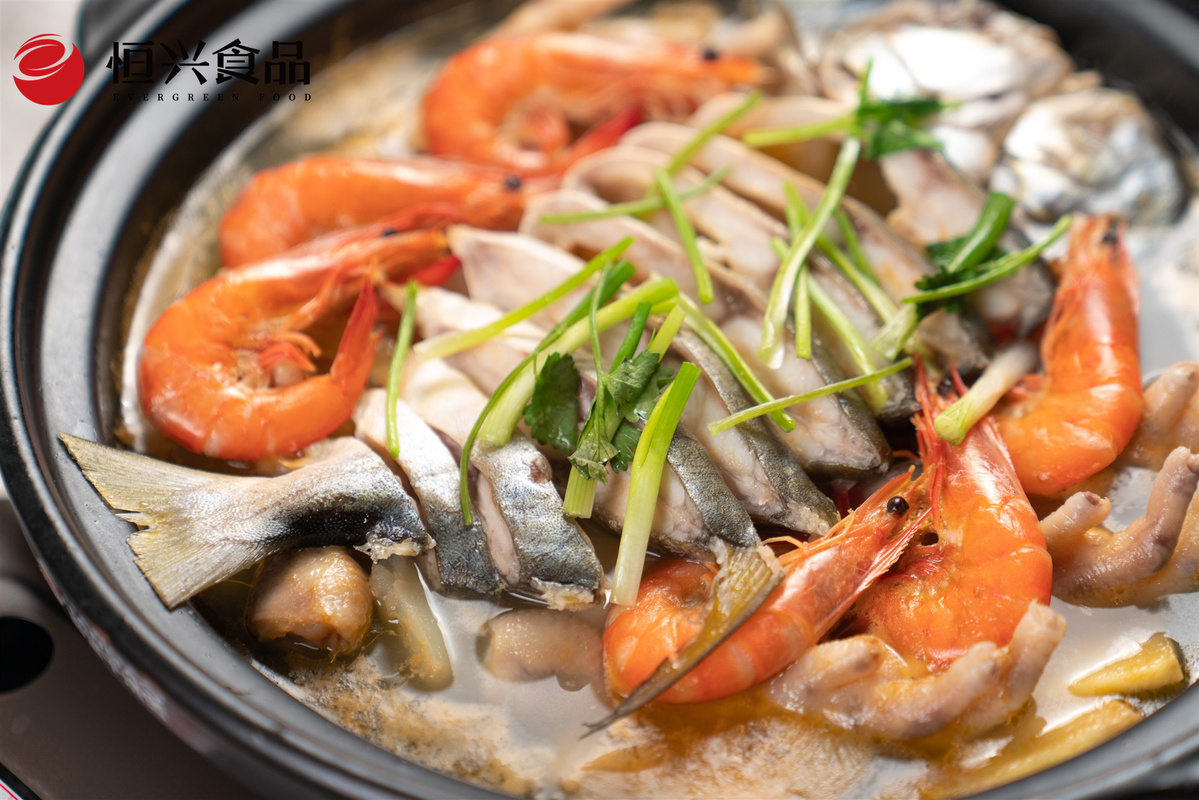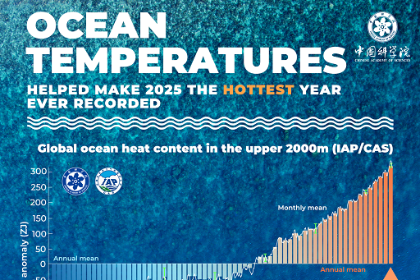Guangdong rides waves toward becoming marine economy powerhouse


Zhanjiang promotes green advancement, high-quality development
With the largest area of mangroves in Guangdong province, Zhanjiang has restored 9,960 hectares of mangroves over recent years through ecological protection.
The city's area of mangroves accounts for 33 percent of the nation's total and 88 percent in the province. Mangroves are becoming fertile grounds for the region's green economic development.
In April in 2021, the Zhanjiang Mangrove Afforestation Project was approved, in which the 380 hectares of mangroves planted in the protected area from 2015 to 2019 were registered as China's first blue carbon credit project.
Later, the Beijing-based SEE Foundation purchased 5,880 tons of carbon dioxide emission reductions generated by the project as of May 2020. All of the income from the project transaction has been used to maintain the ecological restoration effects in the project areas, which benefited the surrounding communities.
Zhanjiang plans to build and restore another 4,183 hectares of mangroves by 2025. A total of 300 million yuan ($43.31 million) is expected to be invested this year to plant 594.67 hectares of mangroves.
The protection and restoration of mangroves is only a microcosm of Zhanjiang's vigorous promotion of environmental protection.
Since the 13th Five-Year Plan (2016-20), the air quality of Zhanjiang has remained excellent. In 2021, the city's air quality ranked first in Guangdong.
From January to August this year, the air quality of Zhanjiang was further improved. The air quality index was 99.2 percent, and the PM2.5 concentration has been at its best level in recent years and continues to rank first in Guangdong.

The industries in Zhanjiang have also adopted a green concept in overall development. One example is the construction of the hydrogen-based shaft furnace project of Baosteel Zhanjiang Iron and Steel on the city's Donghai Island, which is a zero-carbon demonstration plant.
In December 2021, the first phase of the photovoltaic power generation project at Baosteel Zhanjiang Iron and Steel was connected to the grid and began to distribute photovoltaic power for the building of the plant.
The second phase of photovoltaic power generation project of Baosteel Zhanjiang Iron and Steel started on July 8, 2022, which reduces carbon emissions by 76,500 tons per year. Meanwhile, the construction of the photovoltaic project of Zhongke (Guangdong) Refinery and Petrochemical was also rolled out in the first half of last year.


Enterprises on the island are connected to form a "green community" for environmental protection and recycling.
The hydrogen, nitrogen and oxygen produced by steelmaking are continuously supplied to the next-door Zhongke (Guangdong) Refinery and Petrochemical, and petrochemical production materials such as C5 and C9 are sent to the surrounding downstream enterprises through pipelines.
In 2022, the scale of onshore wind power and photovoltaic power generation in Zhanjiang ranked first in Guangdong. The cumulative consumption of new energy power was about 8.2 billion kilowatt-hours, accounting for 41.3 percent of the total power supply in the city.
The 14th Five-Year Plan (2021-25) for Ecological Environmental Protection in Zhanjiang issued earlier this year proposed that by 2025 Zhanjiang will achieve remarkable results in the green transformation of production and lifestyle, greatly improve resource utilization efficiency and maintain the top air quality in Guangdong.

As a major marine city, Zhanjiang is surrounded by the sea on three sides and is endowed with unique marine resources. The coastal water area under the jurisdiction of the city is about 15,000 square kilometers.
The mainland coastline is 1,243.7 km long. It has three typical ocean ecosystems of mangroves, coral reefs and seagrass beds.
From fishery to ready-to-eat meals
Zhanjiang has rich aquatic resources and is an important spot for aquatic farming, processing and export, with complete industrial and supply chains.
Known as the "China Seafood Cuisine City", the number of cages for deep sea breeding in Zhanjiang has reached 3,500, accounting for over 70 percent of the province's total. There are more than 200 aquatic processing enterprises in Zhanjiang and the annual output value of the aquatic industry chain reached more than 50 billion yuan ($7.2 billion) last year.
With people's rapidly changing lifestyles, the pre-cooked food industry in the Guangdong-Hong Kong-Macao Greater Bay Area has turned into a booming business as local governments and enterprises jump on the bandwagon.

Fueled by a more efficient industry chain, Zhanjiang ranked among the top spots in the province in the first half of 2022 with the highest level of development of the ready-to-eat meals segment, taking into account the number and scale of the enterprises, the construction of industrial parks, government support and their reputation.
Found in 1991, a major aquatic product company in China, Guangdong Evergreen, provides safe, nutritious and delicious food from ponds to dining tables and pushes ahead technology innovation and explores a way of industrialization of aquatic food products.
Relying on the resources of the whole industrial chain of aquatic food, Evergreen integrates the research and development, breeding, processing and sales of aquatic food. Evergreen now has six aquatic food and prefabricated food processing plants in China, with an annual capacity of more than 200,000 tons and an annual output value of more than 2 billion yuan ($29 million).
In March 2022, the Guangdong government initiated the country's first provincial-level policy to speed up high-quality development of the pre-cooked food sector. Ten measures are to be taken to achieve the goal, including creating a joint research-and-development platform, as well as a regulatory system for food safety and quality; expanding the industrial cluster; nurturing talent; exploring international markets; and providing enterprises with financial support.

Zhanjiang has also launched similar policies and steps since early last year, with the local government mulling the idea of setting up of an industrial park for the pre-prepared food business. By applying advanced production technologies upgrading cold-chain logistics and strengthening market supervision and regulation, Zhanjiang will establish a comprehensive industrial system and help foster the transformation of technological achievements.

































